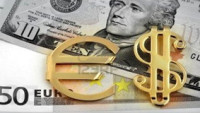 While equity markets on both sides of the Atlantic posted decent gains last week in the wake of the decision by the US Federal Reserve to keep policy unchanged, and a rally in crude oil prices on expectations that we might see some sort of agreement from this week’s OPEC, we still haven’t been able to determine a clear direction of travel, from the ranges of the past few months.
While equity markets on both sides of the Atlantic posted decent gains last week in the wake of the decision by the US Federal Reserve to keep policy unchanged, and a rally in crude oil prices on expectations that we might see some sort of agreement from this week’s OPEC, we still haven’t been able to determine a clear direction of travel, from the ranges of the past few months.
This week’s gathering in Algiers between OPEC and non OPEC members has been on the markets radar for quite some time now, as the various actors stake out their positions with respect to a production freeze. Venezuela’s President Nicolas Maduro set the ball rolling last week, claiming he had secured an undertaking from Iran’s President Rouhani about the potential for action on rising output. This seems highly unlikely but it helped underpin the oil price for most of last week, with some chatter suggesting that Saudi Arabia might also be open to a deal if Iran capped its own output.
This belief soon turned to dust when it was reported on Friday that Saudi Arabia did not expect to see any agreement this week at all sending Brent prices back down sharply, virtually wiping out the gains for the entire week, though US oil prices managed to fare a little better. Reports from the Algerian oil minister over the weekend that claimed that Saudi Arabia had offered to cut its output to January levels has stabilised prices in Asia but also reinforces how difficult any agreement is likely to be.
It is therefore not unrealistic to expect that the outcome of this week’s meeting could well act as a significant factor on the direction of markets this week, and given that OPEC has failed to agree much of anything in the last 12 months, it seems unlikely that it will start now, though it could kick the oil barrel towards the November meeting.
Having seen all the four major central banks of the Bank of England, European Central Bank, Bank of Japan and US Federal Reserve all maintain their policy stances attention now shifts back to the latest economic data, which in Europe continues to give off mixed signals.
The German economy appears to be showing signs of slowing if last week’s PMI numbers are any indication after the latest preliminary services numbers for September showed a sharp slowdown to 50.6 from 51.7 in August. On the flip side the French services sector showed a significant uptick to 54.1.
The last German IFO business survey in August caught quite a few people by surprise slowing sharply to 106.2, suggesting some unease amongst some German businesses about the recent Brexit vote, given the UK’s importance to German exporters.
Friday’s poor services PMI number could be a further indicator to this unease, which could well increase if today’s September IFO survey shows no signs of picking up, with expectations of a slight pick up to 106.3.
Later in the week as we head into the end of a decent quarter for equity markets, attention will turn to ECB President Mario Draghi as well as Fed chief Janet Yellen who are both due to give a couple of speeches later in the week, along with a number of central bank officials, including Fed vice Chair Stanley Fischer, as well as Governor Kuroda from the Bank of Japan.
We could also see markets start to pay more attention to the US Presidential election with the first debate between Hillary Clinton and Donald Trump as the countdown to the November 8th vote gets underway.
A good performance from Mr Trump could see market volatility increase particularly if investors think there is a possibility that he could actually win.
EURUSD – still supported near the 1.1120 area, and looks ready for a move back towards the 1.1300 area, while a move below 1.1120 retargets the low 1.1000’s.
GBPUSD – last week saw another negative week for the pound, but it continues above trend line support from the July lows, which currently comes in at 1.2920. A break lower has the potential to target the 1.2800 level. We need a rebound through the 1.3120 level to stabilise.
EURGBP – having broken through the 0.8620/30 area we could well revisit the previous highs at the 0.8720 area. For this to unfold we need to hold above the 0.8620 level, or risk a move back towards 0.8570.
USDJPY – continues to come under pressure and while below the 102.50 area remains at risk of a move back towards the recent lows around the 99.50 area. While below the 103.00 area the prospect of a move through 99.50 towards 96.00 remains.












